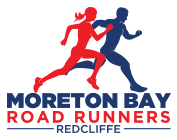Returning to Running Post Injury
The word ‘injury’ strikes fear into any runner’s heart, but don’t despair! Running injuries are relatively common while training for an event. In many cases, all that is needed is a good strategy to get you back up and ready for the big race.
We spoke with Shena Dale, Physiotherapist and Running Coach from Scarborough Physio & Health and asked her what is involved in returning to running post injury and her recommendations on how to return to running in the safest way possible.
What are the first steps on the road to recovery?
- Don’t panic! Most injuries are manageable.
- Don’t ignore your injury! In particular, avoid ‘running through the pain’. If you continue running without changing anything, things will generally get worse. Instead, the aim is to modify the training load and vary activity to avoid pain while still working on fitness and conditioning.
- Get some expert help. See a Physio or health professional early. The earlier you get a correct diagnosis and start doing the right things, the sooner you are likely to be running again pain free. A Physio or health professional can help you to modify what you are doing in a targeted way. Injury seldom requires total rest, but frequently needs a clever approach to help you get to the start line on race day.
What’s the first thing you should do before returning to running?
Consider the following simple tests to see if you are ready to get back pounding the pavement.
- Hop 20-30 times on one leg (especially the injured one). Can you do it without pain? When we run, most runners land on each leg around 80-90 times per minute. That adds up to a lot of hops over a 5km run! If you can’t hop on one leg comfortably, running is likely to be uncomfortable too.
- Walk for 20-30 minutes. Do you experience pain during or after the walk? Walking is a great way to build your fitness again but also a good test to see if you may be able to run. If you are still getting pain with walking, it’s probably worth reconsidering whether it’s time to run.
The top 3 things runners forget to do when returning to running post injury
- Take a step back in your training program. Even if it has been a short layoff (less than 2 weeks), it’s important to start gradually and not resume a training program where you left off pre-injury. How much you step back will depend on the injury but especially in the early stages, it’s better to do less and stay pain free. Once you are pain free, if you have already trained well prior to injury, you will often be able to build your mileage more quickly.
- Build distance and pace gradually. There is such tremendous joy in those first runs after injury that it can be tempting to go too far or too fast. This can often be a quick path to re-injury. Take your time before starting to push yourself again.
- Address the source or cause of the injury. Injuries are tough enough without having the same one happen again. Make sure you are addressing the ‘why’. This may include strength, run technique, training factors, footwear, nutrition and sleep. If this seems a bit overwhelming, a suitably qualified Running Physio or Coach can often assess these factors and help you with an action plan to get run ready.
Post injury training guidelines
- Start with a walk/run and keep it short. Shena's preference is to use a set ratio (something like 3 mins walk: 2 mins run or 300m run: 200m walk) as it is easier to follow. It’s also important to keep the first run/walks nice and short (i.e. 20-30 mins depending on the injury). The idea is to test your body and injury recovery without setting yourself back too far if it becomes painful again. Keep these early sessions to every second day with a recovery day in-between.
- Once you’ve done a few walk/run sessions comfortably and without pain, you can then try either increasing the run/walk ratio or running the same distance at an easy conversational pace.
- Gradually build up the distance. It’s a good idea is to follow the 10% rule (avoid increasing your mileage by more than 10% per week). Note that it’s important to be patient as just these first 3 steps can take several weeks. Don’t stress. Better to go slow and get there rather than go fast and re-injure yourself.
- Build distance first before you start to add intensity such as hill repeats, intervals, or tempo work.
- Add some strength work, such as a gym session. This is often the forgotten element of so many runners’ training programs and can be a huge part of injury recovery and prevention. Ideally, strength work should be included 2-3 times per week.
- Consider alternative forms of exercise, such as cycling, swimming and deep water running. These are great fitness builders and can also give you options to fall back on if you start to get niggles again.
My top tips to prevent re-injury and avoid other injuries.
- If you think you are getting a niggle, get it checked out by a Physio or health professional early.
- Address the cause of the injury and have a plan to work on contributing factors (e.g. strength work, run technique assessment, individualised training plan).
- Aim for consistency in your training. Consistent work over time (even at a slow pace) is generally more beneficial both from a fitness and performance basis than occasional ‘epic’ workouts.
- Have a step back week every 3-4 weeks. This means 20-30% less training volume in that week to allow good recovery.
- Prioritise recovery. Get good sleep, look after your nutrition and try to minimise stress.
- Enjoy your running! Mindset is a powerful tool in so many ways.
All the very best with your running! May you stay injury and pain free!
The above information should not replace individual medical advice. If you have a serious injury or an injury that is not getting better, you should seek advice from your Physiotherapist or Health Professional.
© 2024 Visit Moreton Bay Region Terms & Conditions Privacy Studio Untitled










